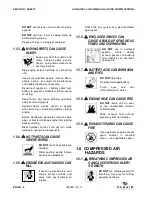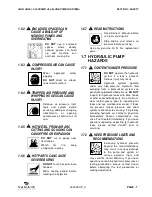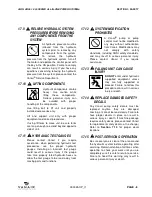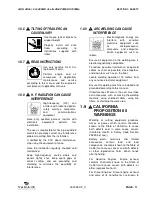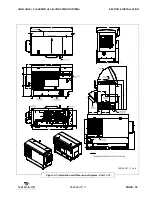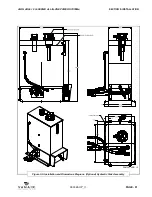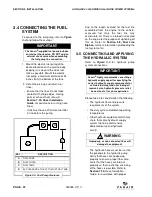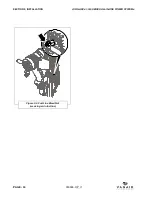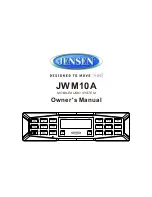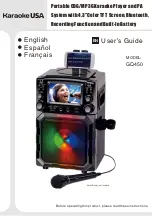
SECTION 1: SAFETY
AIR N ARC
®
I
-
300 SERIES ALL-IN-ONE POWER SYSTEM
®
PAGE - 12
090045-OP_r1
the State of California to cause cancer, birth
defects, and other reproductive harm.
1.10
PRINCIPAL SAFETY
STANDARDS
Safety in Welding, Cutting, and Allied
Processes, ANSI Standard Z49.1, from
Global Engineering Documents (phone: 1-
877-413-5184, website:www.global.ihs.com).
Recommended Safe Practices for the
Preparation for Welding and Cutting of
Containers and Piping, American Welding
Society Standard AWSF4.1, from Global
Engineering Documents (phone: 1-877-413-
5184, web site: www.global.ihs.com).
National Electrical Code, NFPA Standard 70,
from National Fire Protection Association,
P.O. Box 9101, 1 Battery March Park,
Quincy, MA 02269-9101 (phone: 617-770-
3000,
web
site:
www.nfpa.org
and
www.sparky.org).
Safe Handling of Compressed Gases in
Cylinders,
CGA
Pamphlet
P-1,
from
Compressed
Gas
Association,
1735
Jefferson Davis Highway, Suite 1004,
Arlington, VA 22202-4102 (phone: 703-412-
0900, web site: www.cganet.com).
Code for Safety in Welding and Cutting, CSA
StandardW117.2, from Canadian Standards
Association, Standards Sales, 178 Rexdale
Boulevard, Rexdale, Ontario, Canada M9W
1R3 (phone: 800-463-6727 or in Toronto
416-747-4044,
web
site:
www.csainternational.org).
Practice For Occupational And Educational
Eye And Face Protection, ANSI Standard
Z87.1, from American National Standards
Institute, 11 West 42nd Street, New York, NY
10036-8002 (phone: 212-642-4900, web
site: www.ansi.org).
Standard for Fire Prevention During Welding,
Cutting, and Other Hot Work, NFPA Standard
51B, from National Fire Protection
Association, P.O. Box 9101, 1 Battery March
Park, Quincy, MA 02269-9101 (phone: 617-
770-3000, web site: www.nfpa.org.
OSHA, Occupational Safety and Health
Standards for General Industry, Title 29,
Code of Federal Regulations (CFR), Part
1910, Subpart Q, and Part 1926, Subpart J,
from U.S. Government Printing Office,
Superintendent of Documents, P.O. Box
371954, Pittsburgh, PA 15250 (there are 10
Regional Offices; phone for Region 5,
Chicago,
is
312-353-2220,
web
site:
www.osha.gov).
1.11
EMF INFORMATION
Considerations About Welding And The
Effects Of Low Frequency Electric And
Magnetic Fields Welding current, as it flows
through
welding
cables,
will
cause
electromagnetic fields.
There has been and still is some concern
about such fields. However, after examining
more than 500 studies spanning seventeen
years of research, a special blue ribbon
committee of the National Research Council
concluded that: “The body of evidence, in the
committee’s judgment, has not demonstrated
that exposure to power-frequency electric
and magnetic fields is a human-health
hazard.” However, studies are still going forth
and evidence continues to be examined.
Until the final conclusions of the research are
reached, you may wish to minimize your
exposure to electromagnetic fields when
welding or cutting.
To reduce magnetic fields in the workplace,
use the following procedures:
1. Keep cables close together by
twisting or taping them.
2. Arrange cables to one side and
away from the operator.
3.
DO NOT
coil or drape cables
around your body.
4. Keep welding power source and
cables as far away from operator
as possible.
5. Connect work clamp to workpiece
as close to the weld as possible.
Summary of Contents for AIR N ARC I 300 SERIES
Page 12: ...PAGE X 090045 OP_r1 BLANK PAGE ...
Page 129: ...BLANK PAGE ...









